CARS
25 Most Devastating Hurricanes In History
Published
5 months agoon
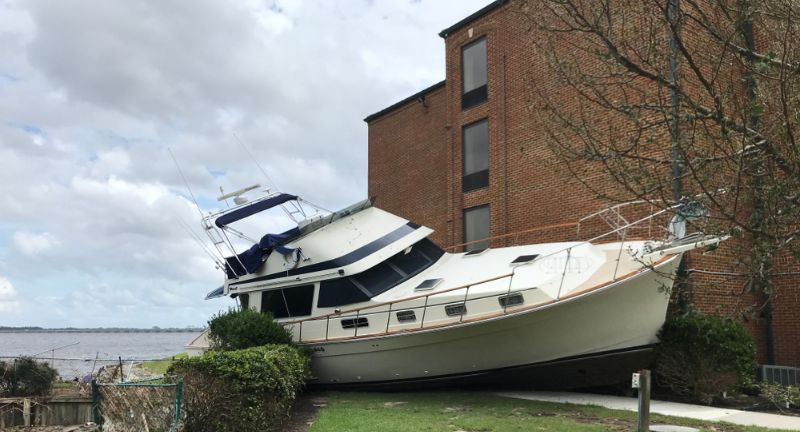
Shutterstock
Hurricanes are among the most powerful and destructive natural disasters on the planet, capable of reshaping landscapes and devastating entire communities. Throughout history, some hurricanes have left lasting marks, not only for the damage they caused but for the sheer strength and ferocity of their winds and storm surges. These storms have claimed thousands of lives, caused billions of dollars in damage, and changed the way we approach disaster preparedness and response. From the Caribbean to the U.S. Gulf Coast and beyond, the worst hurricanes in history serve as a reminder of nature’s power. In this article, we’ll explore 25 of the deadliest and most destructive hurricanes ever recorded.
Hurricane Katrina (2005)
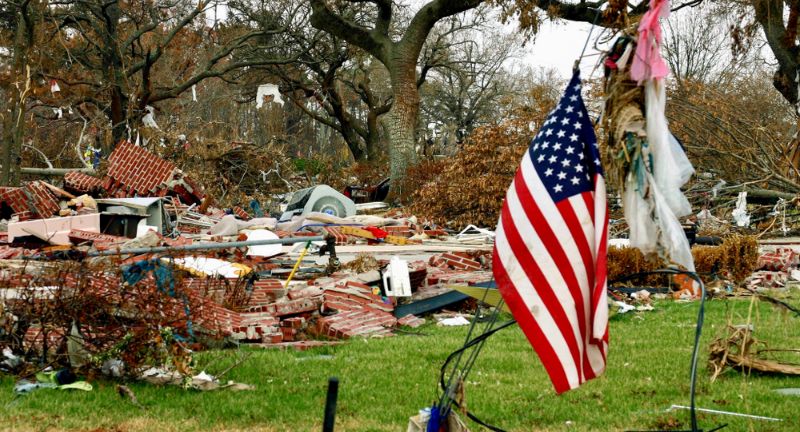
Shutterstock
Hurricane Katrina is remembered as one of the deadliest and most destructive hurricanes in U.S. history. The storm reached Category 5 strength in the Gulf of Mexico, but it made landfall as a Category 3 hurricane, primarily affecting New Orleans and the Gulf Coast. The levees in New Orleans failed, leading to catastrophic flooding that left nearly 80% of the city underwater. With over 1,800 fatalities and $125 billion in damages, the storm exposed weaknesses in disaster preparedness and sparked discussions on climate resilience.
Galveston Hurricane (1900)
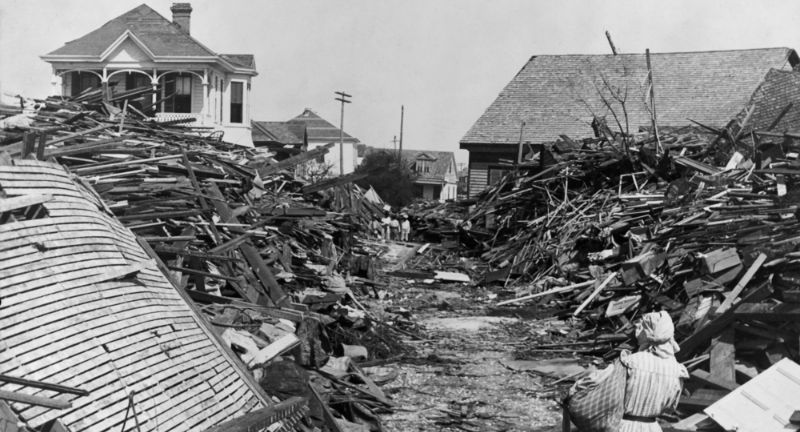
Shutterstock
The Galveston Hurricane of 1900 remains the deadliest natural disaster in U.S. history, with an estimated death toll of 8,000 to 12,000 people. The powerful Category 4 hurricane struck the coastal city of Galveston, Texas, causing widespread destruction and flooding. At the time, weather prediction was limited, and the island’s infrastructure was inadequate to protect against such a large storm. In response to the devastation, Galveston built a protective seawall and elevated parts of the city to reduce the risk of future storms.
Hurricane Maria (2017)
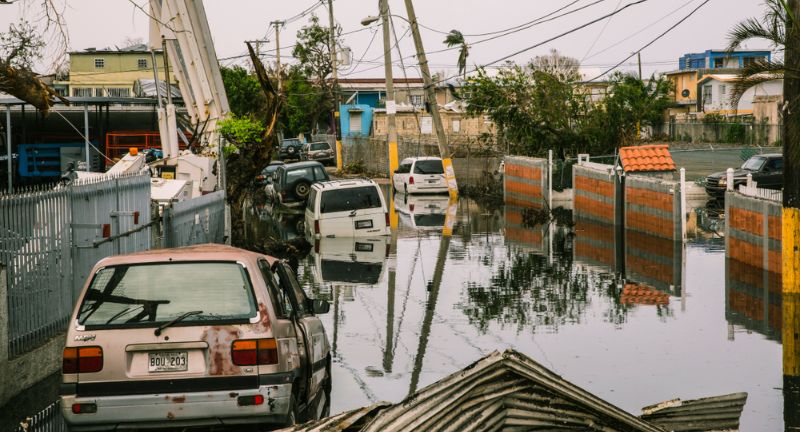
Shutterstock
Hurricane Maria made landfall in Puerto Rico as a devastating Category 5 storm, causing widespread destruction and a humanitarian crisis on the island. Maria wiped out power across the island, leaving millions without electricity for months, and damaged critical infrastructure, including water and healthcare systems. The storm was directly responsible for nearly 3,000 deaths, with the prolonged recovery exacerbating the loss of life. Economic damage from the hurricane was estimated at $90 billion, making it one of the costliest hurricanes in U.S. history.
Hurricane Mitch (1998)
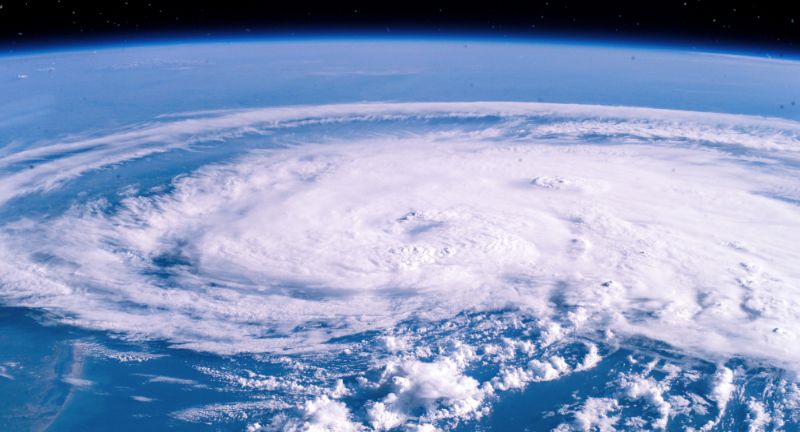
Shutterstock
Hurricane Mitch is remembered as one of the deadliest Atlantic hurricanes, claiming over 11,000 lives across Central America, particularly in Honduras and Nicaragua. As a slow-moving Category 5 hurricane, Mitch dumped enormous amounts of rain, causing devastating floods and landslides that wiped out entire villages. The storm caused around $6 billion in damage, leaving a long-lasting impact on the region’s infrastructure and economy. Recovery efforts were slow, and the storm’s destruction prompted international humanitarian aid for years afterward.
Hurricane Andrew (1992)
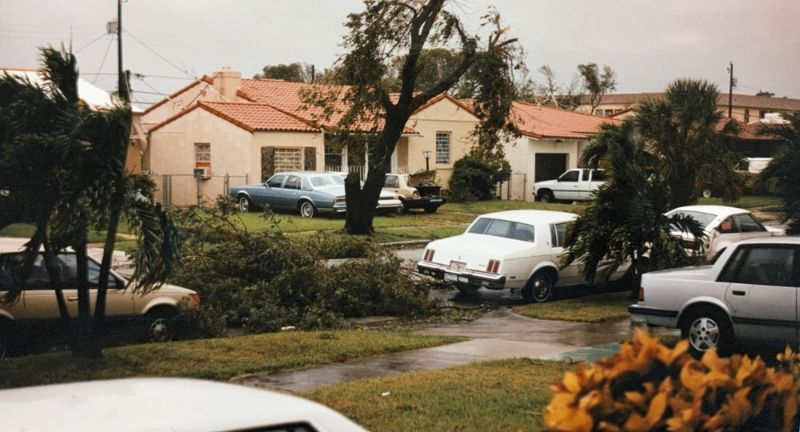
Shutterstock
Hurricane Andrew hit South Florida as a powerful Category 5 storm, leaving a path of destruction in its wake. Entire neighborhoods were leveled by the 175 mph winds, displacing tens of thousands of residents and causing 65 deaths. Andrew caused over $27 billion in damage, making it one of the costliest natural disasters in U.S. history at the time. The storm’s impact led to a complete overhaul of Florida’s building codes and changes in hurricane preparedness practices nationwide.
Bhola Cyclone (1970)
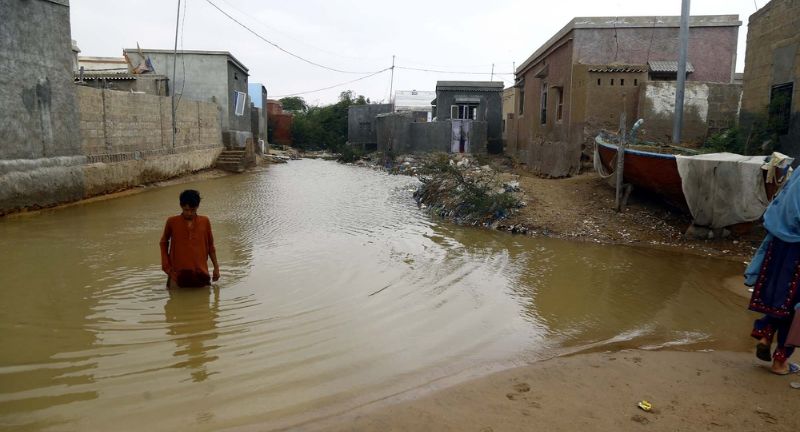
Shutterstock
The Bhola Cyclone, which struck East Pakistan (now Bangladesh) in 1970, remains the deadliest tropical cyclone in recorded history. With wind speeds of up to 115 mph, the cyclone caused a massive storm surge that flooded low-lying coastal regions, killing between 300,000 and 500,000 people. The aftermath of the cyclone led to significant political unrest in Pakistan and contributed to the independence movement in what would become Bangladesh. The disaster underscored the vulnerability of densely populated, low-lying areas to tropical storms and highlighted the need for better warning systems and infrastructure.
Hurricane Camille (1969)
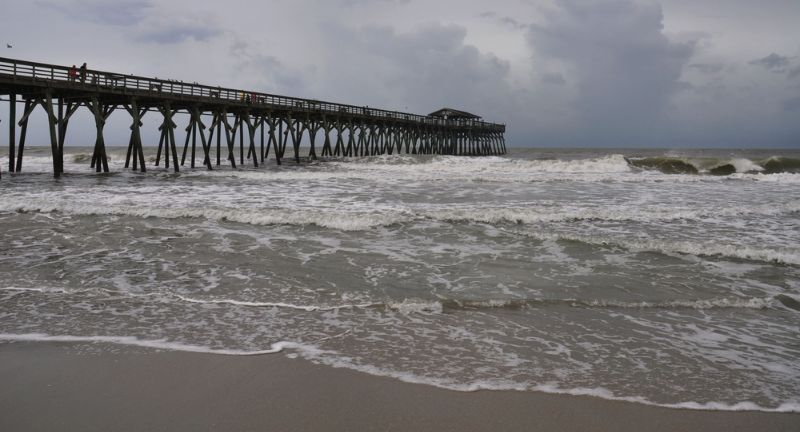
Shutterstock
Hurricane Camille, one of the strongest hurricanes to ever hit the United States, made landfall on the Mississippi Gulf Coast as a Category 5 storm. With winds reaching 175 mph, Camille caused catastrophic damage, particularly from the storm surge, which reached 24 feet in some areas. The storm killed 259 people and caused over $1.4 billion in damage (equivalent to about $10 billion today). Camille’s destruction stretched from the Gulf Coast to Virginia, where it triggered deadly flash floods and landslides.
Labor Day Hurricane (1935)
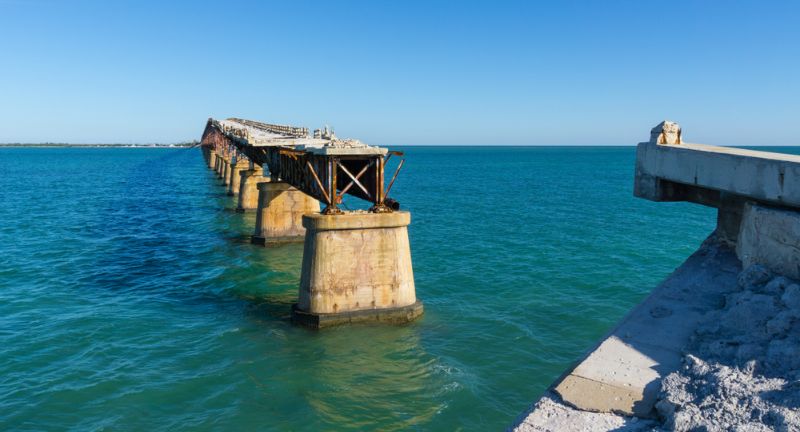
Shutterstock
The Labor Day Hurricane of 1935 is the most intense hurricane to ever make landfall in the United States, striking the Florida Keys as a Category 5 storm. With winds of up to 185 mph, the storm devastated the Keys, killing over 400 people, many of whom were World War I veterans working on construction projects. The storm surge and high winds obliterated communities, leaving little behind. After the disaster, a stronger infrastructure was built in the region, including the iconic Overseas Highway, improving safety for future storms.
Hurricane Wilma (2005)
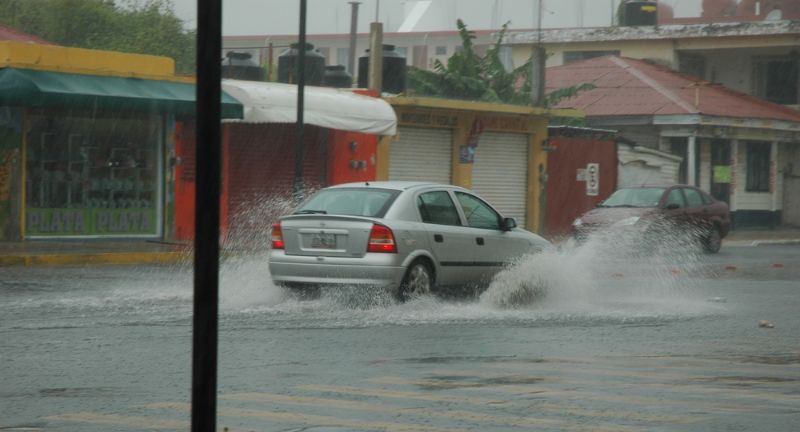
Shutterstock
Hurricane Wilma set the record for the lowest pressure ever recorded in the Atlantic Basin, making it one of the most intense hurricanes in history. The storm reached Category 5 strength and devastated parts of Mexico’s Yucatán Peninsula before making landfall in Florida as a Category 3 hurricane. Wilma caused 87 deaths and inflicted $29.1 billion in damage across the Caribbean and the U.S. Gulf Coast. The storm’s rapid intensification and slow movement caused widespread flooding and wind damage in the areas it struck.
Hurricane Sandy (2012)
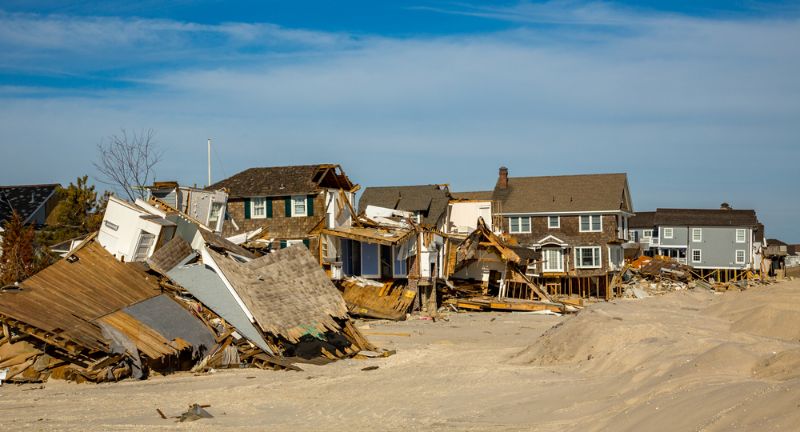
Shutterstock
Although downgraded to a post-tropical cyclone at landfall, Hurricane Sandy, nicknamed “Superstorm Sandy,” caused widespread devastation across the northeastern United States. The storm’s massive size and storm surge flooded New York City, knocking out the subway system and overwhelming coastal defenses. Sandy caused $70 billion in damages and killed 233 people across eight countries, with the worst impacts felt in New Jersey and New York. The storm highlighted the vulnerability of major metropolitan areas to flooding and extreme weather events.
Hurricane Irma (2017)
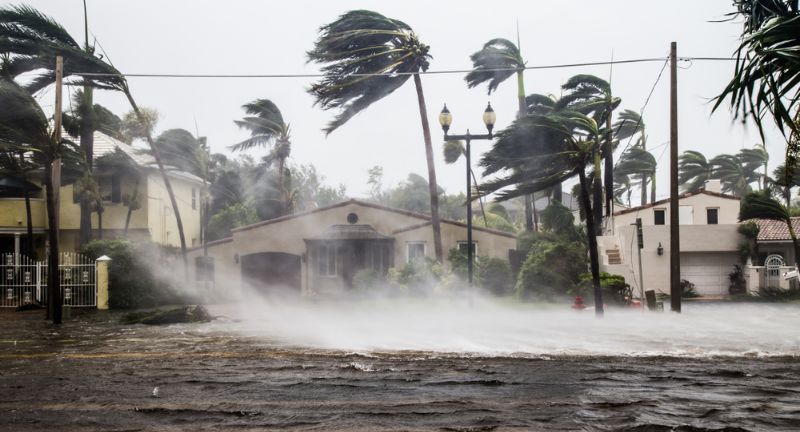
Shutterstock
Hurricane Irma, a Category 5 storm, ravaged the Caribbean and southeastern United States, causing unprecedented damage. With sustained winds of 185 mph, Irma struck islands such as Barbuda, Saint Martin, and the U.S. Virgin Islands, leaving a path of destruction. The storm caused 134 deaths and $77 billion in damages, making it one of the costliest hurricanes in history. Irma’s enormous size and power led to mass evacuations, particularly in Florida, where millions of residents fled ahead of its landfall.
Hurricane Ike (2008)
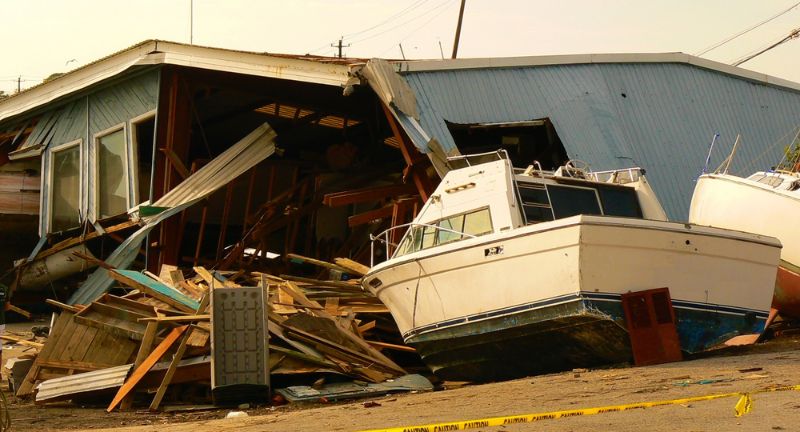
Shutterstock
Hurricane Ike, a Category 4 hurricane, was a massive storm that caused significant damage across the Caribbean, Texas, and Louisiana. Ike’s storm surge was particularly destructive, devastating the Texas coast and inundating cities like Galveston and parts of Houston. The storm killed 195 people and caused over $30 billion in damage. Ike’s large size and long-lasting effects, from coastal flooding to inland tornadoes, made it one of the most impactful hurricanes in recent U.S. history.
Hurricane Hazel (1954)
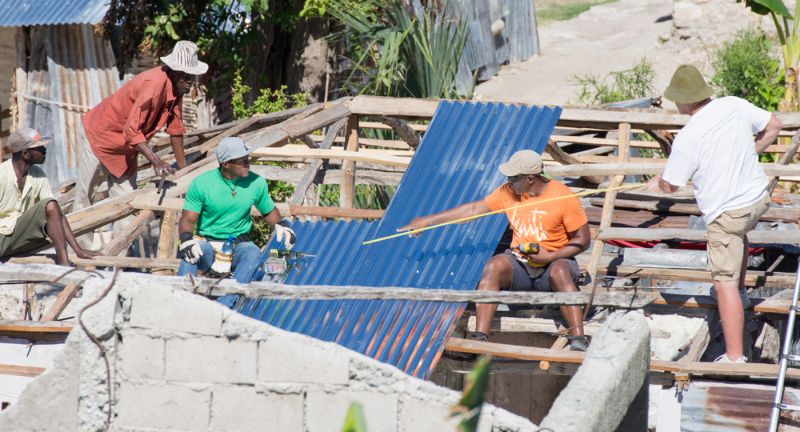
Shutterstock
Hurricane Hazel made landfall in the Carolinas as a powerful Category 4 hurricane before moving north, becoming Canada’s deadliest tropical storm. Hazel’s storm surge wiped out beach communities along the Carolina coast, while inland flooding caused widespread destruction. The storm caused over 1,000 deaths in Haiti and 95 deaths in the United States and Canada. Hazel remains notable for its reach, affecting areas as far north as Toronto, where it caused extensive flooding and damage.
Typhoon Tip (1979)

Shutterstock
Typhoon Tip holds the record for being the largest and most intense tropical cyclone ever recorded. At its peak, Tip had a diameter of over 1,380 miles and wind speeds of up to 190 mph. Although it weakened before making landfall in Japan, Tip still caused significant damage, killing 99 people and triggering landslides and flooding. The storm’s massive size and strength make it one of the most extraordinary cyclones in meteorological history.
Hurricane Florence (2018)

Shutterstock
Hurricane Florence made landfall in the Carolinas as a Category 1 storm but caused catastrophic flooding due to its slow movement and prolonged rainfall. Some areas received over 35 inches of rain, leading to widespread river flooding that affected thousands of homes. Florence caused 54 deaths and more than $24 billion in damage, with many communities struggling to recover from the extended flooding. The storm’s impact lasted for months, as rivers continued to rise long after the storm had passed.
Great Hurricane of 1780
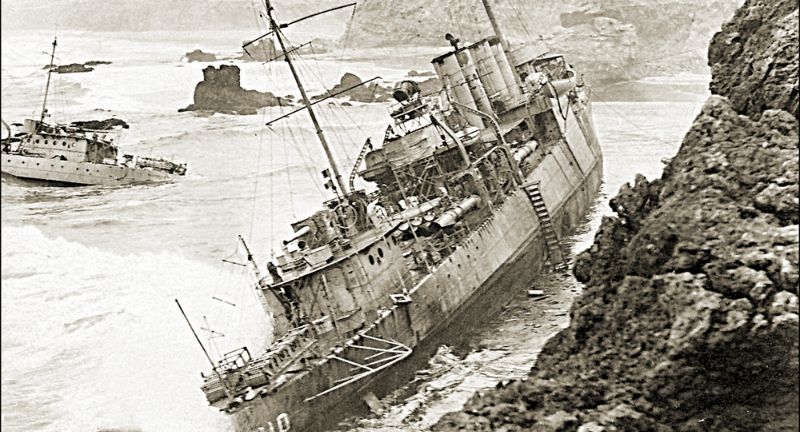
Shutterstock
The Great Hurricane of 1780 is the deadliest Atlantic hurricane on record, killing an estimated 22,000 people in the Caribbean. The storm struck several islands, including Barbados, Martinique, and St. Lucia, causing widespread destruction. Although meteorological data from the time is limited, it is believed to have been a Category 5 hurricane with winds strong enough to flatten entire towns. The storm occurred during the American Revolutionary War, compounding the devastation and loss of life in the region.
Hurricane Gilbert (1988)
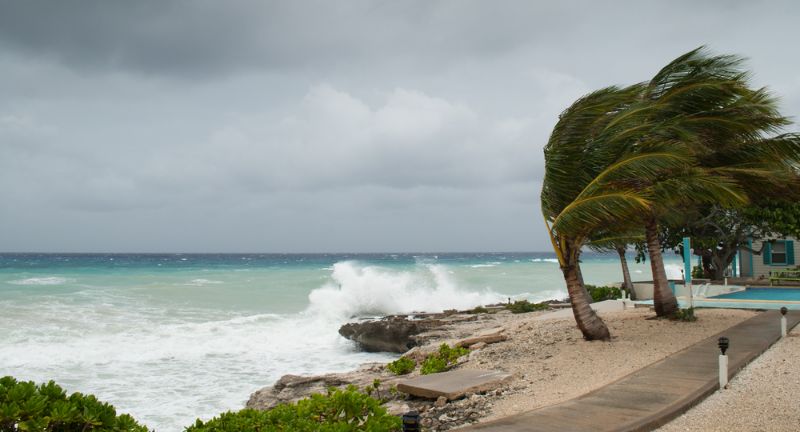
Shutterstock
Hurricane Gilbert was a Category 5 hurricane that left a trail of destruction across the Caribbean and Mexico. With winds of up to 185 mph, Gilbert caused extensive flooding and wind damage, particularly in Jamaica and Mexico’s Yucatán Peninsula. The storm killed 318 people and caused over $7.1 billion in damage, making it one of the most intense storms of its time. Gilbert held the record for the lowest pressure in the Atlantic Basin until it was surpassed by Hurricane Wilma in 2005.
Hurricane Ivan (2004)
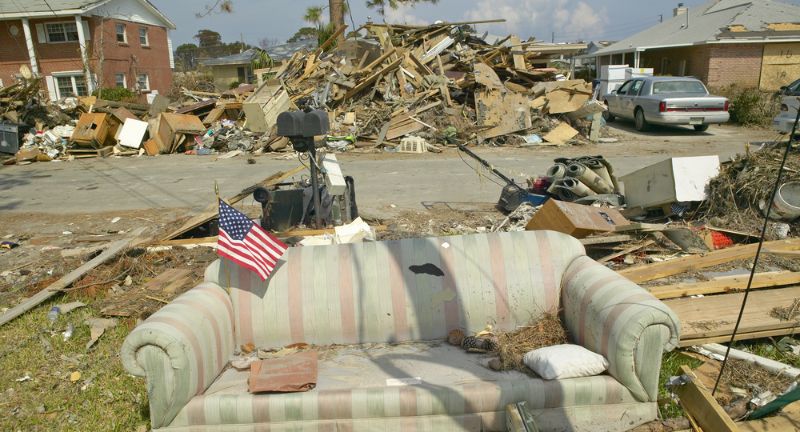
Shutterstock
Hurricane Ivan, a long-lasting Category 5 storm, wreaked havoc from the Caribbean to the U.S. Gulf Coast. The storm caused significant damage in Grenada, the Cayman Islands, and the U.S., particularly in Alabama and Florida. Ivan killed 124 people and caused over $26 billion in damage. The storm also spawned numerous tornadoes, which contributed to the widespread destruction along its path.
Hurricane Harvey (2017)
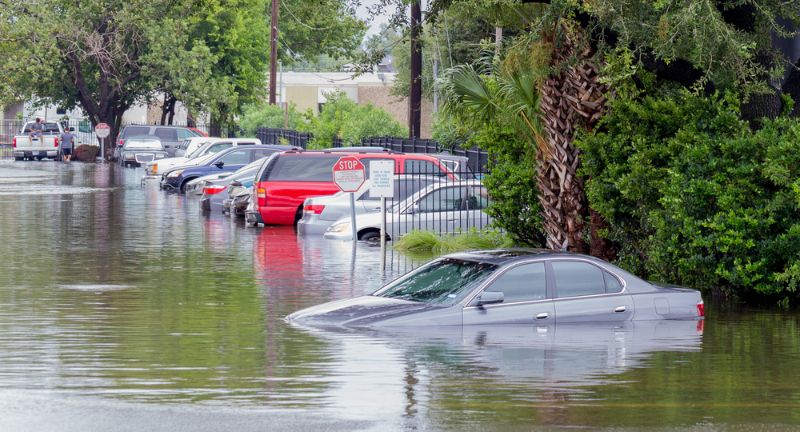
Shutterstock
Hurricane Harvey made landfall as a Category 4 storm, causing catastrophic flooding across southeast Texas, particularly in the Houston area. The storm stalled over the region, dumping more than 60 inches of rain in some places, leading to unprecedented flooding. Harvey caused $125 billion in damage, tying with Katrina as the costliest hurricane in U.S. history. The storm also killed 107 people and displaced thousands, with recovery efforts continuing long after the storm passed.
Hurricane Michael (2018)
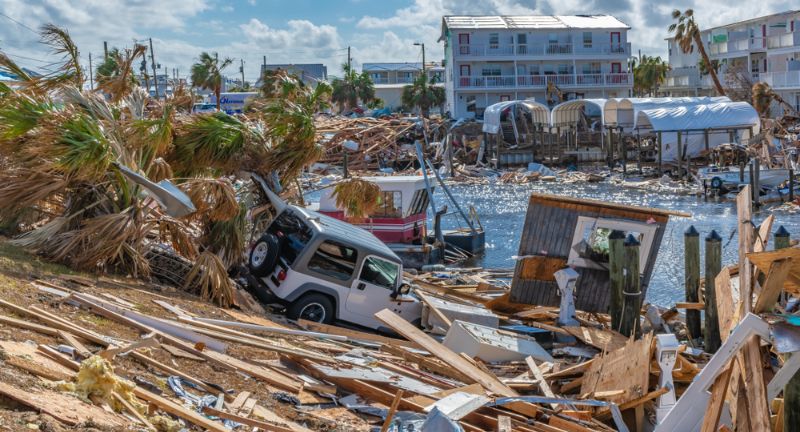
Shutterstock
Hurricane Michael made landfall in the Florida Panhandle as a powerful Category 5 hurricane, becoming one of the strongest storms to hit the continental U.S. in modern history. Michael’s winds and storm surge caused widespread destruction, particularly in Mexico Beach and Panama City. The storm killed 59 people and caused over $25 billion in damage, with entire communities being flattened by its force. Michael’s rapid intensification took many by surprise, leading to urgent last-minute evacuations.
Typhoon Haiyan (2013)
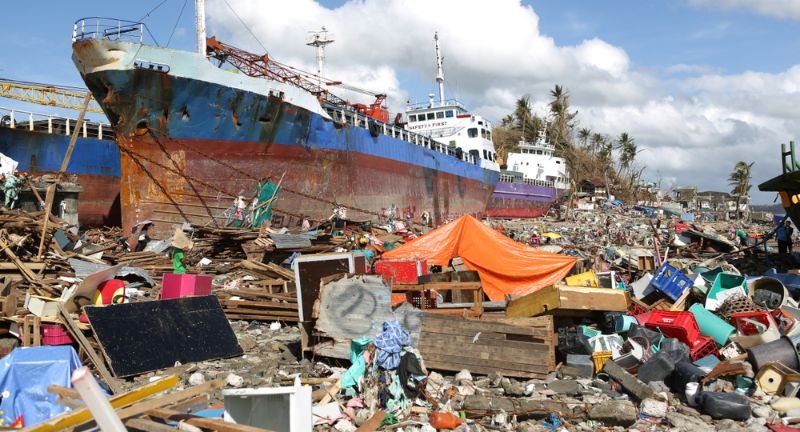
Shutterstock
Typhoon Haiyan, also known as Yolanda in the Philippines, was one of the strongest tropical cyclones ever recorded. With sustained winds of 195 mph, Haiyan devastated the central Philippines, particularly the city of Tacloban, where storm surge and winds caused widespread destruction. The storm killed over 6,300 people, displaced millions, and created a massive humanitarian crisis. The scale of the destruction made Haiyan one of the worst natural disasters in the region’s history, prompting international aid efforts.
Hurricane Jeanne (2004)
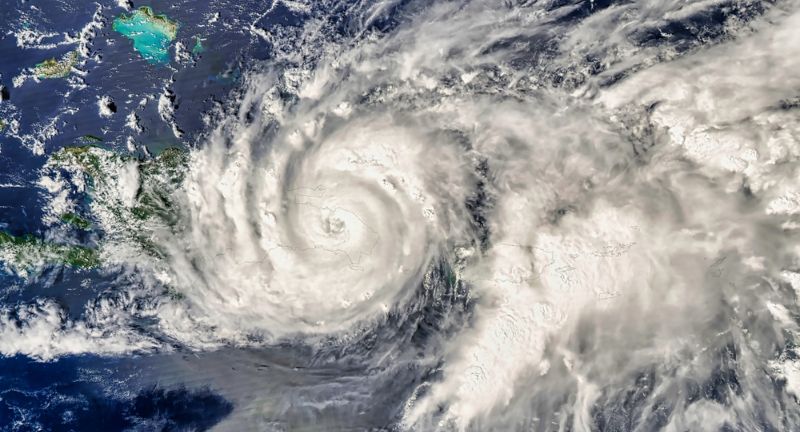
Shutterstock
Hurricane Jeanne caused catastrophic flooding and landslides in Haiti, where it was responsible for the deaths of over 3,000 people. Although Jeanne was a Category 3 storm at its peak, its rainfall and flooding had devastating effects on the Caribbean, particularly in Haiti, which was already vulnerable to natural disasters. The storm also caused damage in Florida, making landfall as the fourth hurricane to hit the state in the 2004 season. Jeanne’s impact on Haiti underscored the need for disaster preparedness in vulnerable regions.
Hurricane Georges (1998)
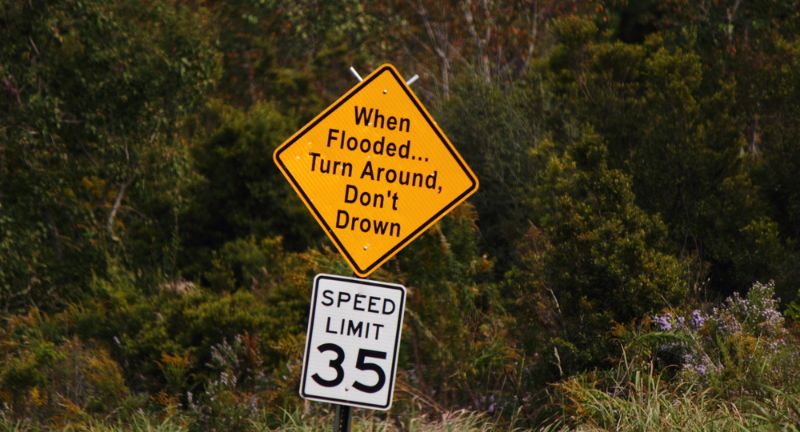
Shutterstock
Hurricane Georges was a Category 4 hurricane that caused widespread damage across the Caribbean and the U.S. Gulf Coast. The storm caused significant destruction in Puerto Rico, the Dominican Republic, and Haiti, before making landfall in the U.S., where it impacted Mississippi and Alabama. Georges was responsible for 604 deaths and caused over $10 billion in damage. The storm’s slow movement caused severe flooding, particularly in Puerto Rico and the U.S. Gulf Coast, where it lingered for days.
Hurricane Paloma (2008)
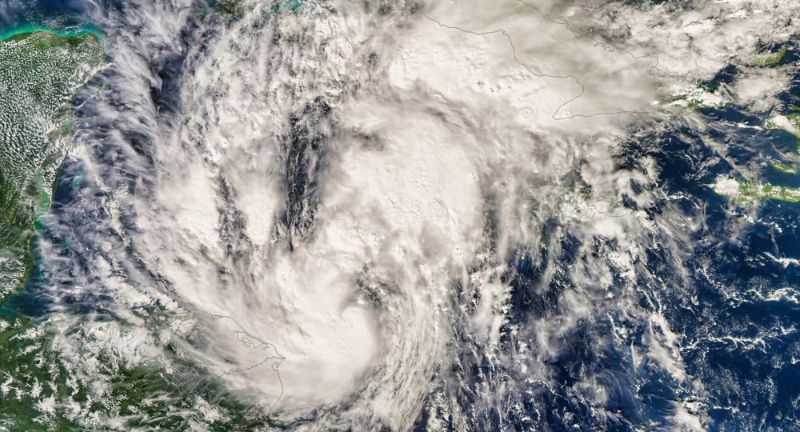
Shutterstock
Hurricane Paloma, a Category 4 storm, caused significant damage in the Cayman Islands and Cuba in November 2008. Paloma’s powerful winds and storm surge devastated coastal areas, particularly in Cuba’s Santa Cruz del Sur, where homes and infrastructure were destroyed. Despite the storm’s intensity, timely evacuations helped to keep the death toll relatively low, with most damage being economic. Paloma caused $454 million in damage, marking it as one of the strongest late-season hurricanes to hit the region.
Hurricane Inez (1966)
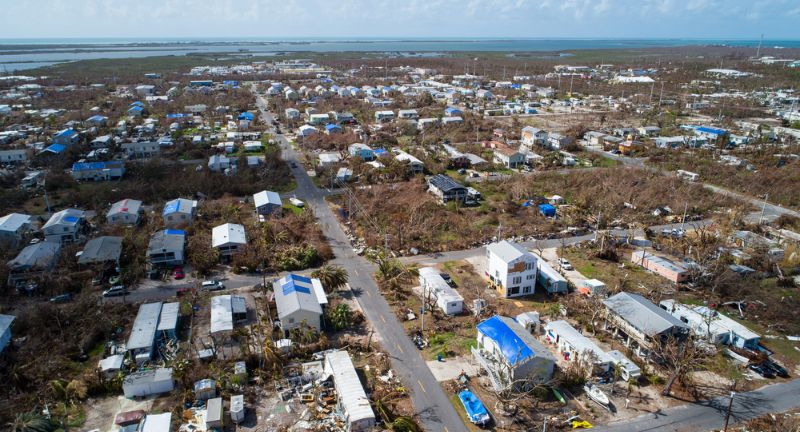
Shutterstock
Hurricane Inez was a powerful Category 5 hurricane that caused widespread destruction across the Caribbean, Mexico, and parts of the southern United States. The storm was responsible for over 1,000 deaths, with flooding and landslides in Haiti and the Dominican Republic contributing to the high death toll. Inez also caused significant damage in the Florida Keys and along Mexico’s Gulf Coast. The storm’s long track and multiple landfalls made it one of the most destructive storms of the 1960s.
Conclusion
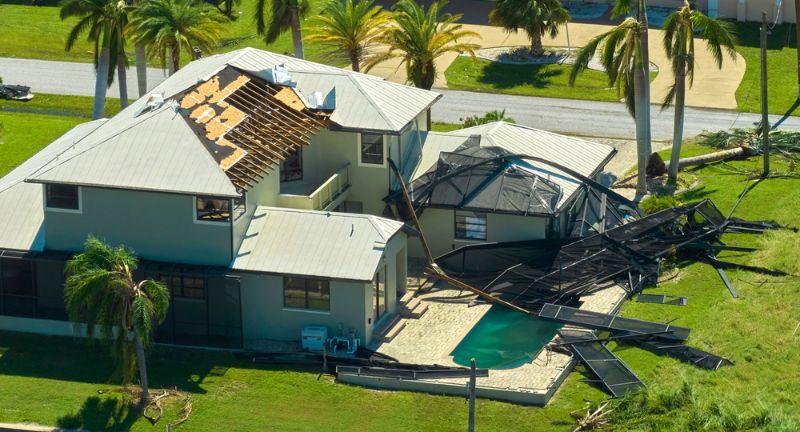
Shutterstock
The devastating impact of hurricanes serves as a reminder of nature’s immense power and unpredictability. While advancements in forecasting and preparedness have helped mitigate some damage, the deadliest hurricanes in history highlight the importance of remaining vigilant and ready for future storms. As climate change continues to influence weather patterns, the frequency and intensity of hurricanes are expected to rise, making it crucial to strengthen infrastructure and improve disaster response. These historical hurricanes have taught us valuable lessons about resilience and recovery, but they also remind us that preparation is key to saving lives. As we look to the future, learning from the past can help us better face the storms yet to come.
ADVERTISEMENT - CONTINUE BELOW
About Bon Voyaged
Welcome to Bon Voyaged, your gateway to a world of adventure, exploration, and cultural discovery. Whether you're an intrepid globetrotter planning your next big adventure, a travel enthusiast seeking inspiration for your bucket list, or simply someone looking to escape through the wonders of travel from the comfort of your own home, our platform is here to provide you with a wealth of information, tips, and inspiration. Join us in celebrating the beauty and diversity of our world as we share stories, recommendations, and a passion for wanderlust that knows no boundaries.
More From Bon Voyaged
ADVERTISEMENT
ADVERTISEMENT


TRAVEL5 days ago
Boats, Pubs, and Beautiful Views: Why a Canal Vacation is a Must-Do in the UK
Cruising along the UK’s canal system offers a travel experience unlike any other. With over 2,000 miles of picturesque waterways,...


TRAVEL6 days ago
London for Less: 25 Amazing Free Activities for Visitors
London is a city that seamlessly blends history, culture, and modern attractions, with something for everyone to enjoy. While many...


TRAVEL2 weeks ago
The Ultimate UK Travel Guide for English Lit Lovers
The United Kingdom is a literary paradise, filled with the homes, haunts, and inspirations of some of the world’s greatest...


TRAVEL2 weeks ago
Surf’s Up! 25 Perfect Beaches for First-Time Surfers
Learning to surf is an exciting and rewarding experience, but choosing the right beach can make all the difference for...



